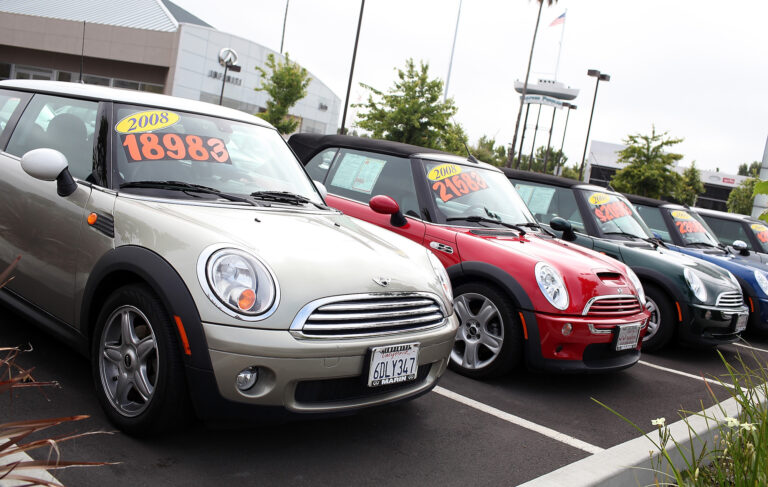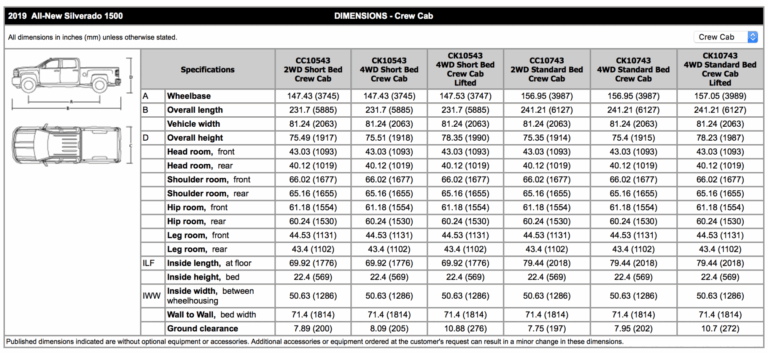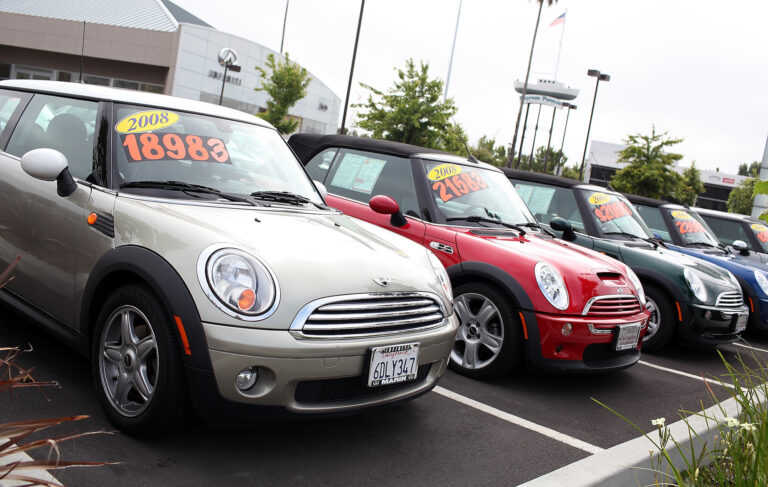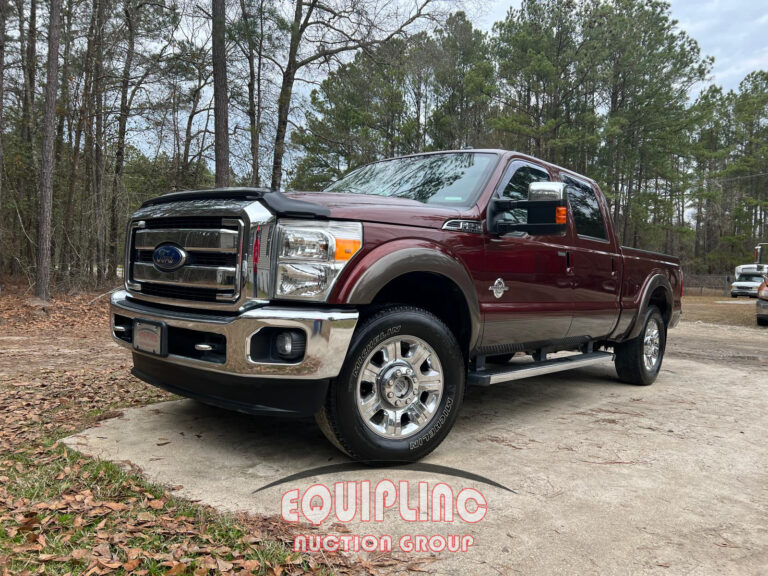What Do You Need To Upgrade With Jeep Stroker
What Do You Need To Upgrade With Jeep Stroker cars.truckstrend.com
The iconic Jeep 4.0L inline-six engine is a legendary powerplant, renowned for its simplicity, reliability, and robust torque delivery. However, for many off-road enthusiasts and performance seekers, "good enough" simply isn’t enough. Enter the Jeep stroker engine: a popular and highly effective modification that transforms the humble 4.0L into a torque-monster, significantly boosting horsepower and low-end grunt. But building a stroker isn’t just about swapping out a few internal engine parts; it’s a comprehensive undertaking that demands upgrades across multiple vehicle systems to ensure reliability, performance, and safety. Ignoring these critical supporting modifications is a recipe for disaster, potentially leading to costly failures and a frustrating ownership experience. This detailed guide will walk you through everything you need to upgrade when you embark on the journey of building a Jeep stroker.
Understanding the Jeep Stroker Engine Itself
What Do You Need To Upgrade With Jeep Stroker
At its core, a "stroker" engine involves increasing the engine’s displacement by installing a crankshaft with a longer stroke (hence "stroker") and often matching connecting rods and pistons. For the Jeep 4.0L, this typically involves using a crankshaft from an older 4.2L (258ci) Jeep engine or an aftermarket stroker crank, paired with custom pistons and connecting rods. Common stroker displacements for the 4.0L include 4.6L, 4.7L, 4.9L, and even 5.0L, each offering varying levels of power increase. The result is a substantial boost in torque, particularly in the lower RPM range, which is invaluable for crawling over obstacles, pulling heavy loads, or simply enjoying more spirited driving. While the internal engine components form the heart of the stroker, they are merely the beginning of the upgrade path.
The Crucial Supporting Upgrades: Beyond the Block
Once you’ve decided to build a stroker, you must understand that the increased power and torque will place significantly more stress on every component designed to handle the stock 4.0L’s output. To harness this newfound power safely and effectively, a holistic approach to upgrades is essential.
1. Fuel System Enhancements
A larger displacement engine demands more fuel. The stock fuel system simply won’t be able to deliver the necessary volume and pressure, leading to a lean condition that can cause engine damage, detonation, and a significant loss of power.
- Larger Fuel Injectors: This is paramount. You’ll need higher flow-rate injectors (e.g., 24lb/hr to 28lb/hr or more, depending on your final displacement and power goals) to adequately fuel the increased air volume.
- High-Volume Fuel Pump: The stock fuel pump may struggle to maintain sufficient pressure and flow under the increased demand. An upgraded, higher-volume fuel pump is often necessary.
- Adjustable Fuel Pressure Regulator (Optional but Recommended): While not always mandatory, an adjustable regulator allows for fine-tuning fuel pressure to optimize performance and compensate for minor variations.

2. Air Intake and Exhaust System Upgrades
For an engine to produce more power, it needs to breathe better – both in and out. The stock intake and exhaust systems are restrictive for a higher-displacement engine.
- High-Flow Air Intake: A cold air intake (CAI) or a less restrictive aftermarket air filter and housing can help the engine draw in more air efficiently.
- Largoter Throttle Body: Upgrading from the stock 60mm throttle body to a larger 62mm or even 68mm unit allows for greater airflow into the intake manifold, directly impacting horsepower.
- High-Flow Exhaust Header: The stock exhaust manifold is prone to cracking and is restrictive. A tubular, long-tube, or shorty header designed for better flow is a significant improvement.
- Larger Diameter Exhaust System: Moving to a 2.5-inch or 3-inch diameter cat-back exhaust system with a high-flow catalytic converter (if applicable for emissions) and a less restrictive muffler will reduce back pressure, allowing the engine to expel exhaust gases more efficiently.
3. Cooling System Overhaul
More power equals more heat. A stroker engine will generate significantly more thermal energy than a stock 4.0L, and the factory cooling system is often barely adequate for the stock engine, let alone a higher-output version.
- Heavy-Duty Radiator: An all-aluminum, multi-core, or larger capacity radiator is crucial for dissipating the increased heat. This is non-negotiable.
- High-Flow Water Pump: An upgraded water pump can circulate coolant more efficiently through the system.
- Upgraded Fan Clutch or Electric Fan Conversion: The stock mechanical fan clutch may not pull enough air through the larger radiator, especially at low speeds. An upgraded heavy-duty fan clutch or a powerful electric fan conversion is highly recommended.
- Lower Temperature Thermostat: A 180°F or 195°F thermostat (depending on tuning) can help keep engine temperatures in check.
4. Engine Management and Tuning
This is arguably the single most critical upgrade outside of the engine build itself. A stroker engine will not run correctly on a stock ECU (Engine Control Unit). The factory programming is designed for a specific displacement, fuel delivery, and ignition timing.
- Custom ECU Tune: This is absolutely essential. A professional tune will remap the fuel delivery, ignition timing, and other parameters to optimize performance, prevent detonation, and ensure the engine runs reliably with its new displacement and airflow characteristics. This often involves flashing the existing ECU or using an aftermarket programmable ECU.
- Wideband O2 Sensor (for tuning validation): While not strictly an "upgrade," a wideband O2 sensor is indispensable for the tuner to accurately monitor the air-fuel ratio and create a safe and powerful tune.
5. Drivetrain Reinforcement
The stock drivetrain components were designed to handle the 4.0L’s 220 lb-ft of torque. A stroker can easily push 280-300+ lb-ft of torque, especially at lower RPMs. This added stress will quickly expose weak links.
- Transmission:
- Automatic Transmissions (AW4, 42RE): A heavy-duty torque converter, a shift kit, and an auxiliary transmission cooler are often necessary. For extreme applications, a full transmission rebuild with stronger components or even a transmission swap (e.g., to a more robust AX15 or an even stronger automatic) might be considered.
- Manual Transmissions (AX15, NV3550): A heavy-duty clutch kit (pressure plate and disc) is essential to handle the increased torque without slipping. A stronger flywheel may also be beneficial.
- Transfer Case: While often robust, extreme off-roaders with strokers might consider a heavier-duty chain, a slip-yoke eliminator (SYE), or even an aftermarket transfer case for added strength and lower gearing.
- Driveshafts: Stronger U-joints are a minimum. Custom, heavier-duty driveshafts (often with CV joints) may be required, especially with a lift kit and increased articulation.
- Axles: This is a major consideration. Stock Dana 35 rear axles are notoriously weak and will likely fail under stroker power, especially with larger tires. Upgrading to a Dana 44, Ford 8.8, or even a Dana 60 rear axle is highly recommended. Front Dana 30 axles can be strengthened with chromoly shafts, but a Dana 44 front is ideal for heavy off-roading.
- Gears: Re-gearing your axles is crucial. The increased torque means you can run numerically lower gears (e.g., 3.73s, 4.10s) with larger tires, but the exact ratio depends on tire size, transmission, and intended use. Proper re-gearing optimizes the power band, reduces stress on the drivetrain, and improves fuel economy.
6. Braking System Upgrades
More power means more speed, and typically, a stroker is paired with larger, heavier tires, which significantly increase stopping distances.
- Larger Rotors and Calipers: Upgrading to larger diameter rotors and multi-piston calipers will provide significantly improved stopping power.
- Performance Brake Pads: Paired with upgraded rotors, performance pads offer better friction and fade resistance.
- Stainless Steel Brake Lines: These reduce line flex, providing a firmer and more consistent pedal feel.
7. Suspension and Steering Components (Indirect but Important)
While not directly related to engine power, a stroker often accompanies larger tires and more aggressive off-road use, putting increased strain on these systems.
- Heavy-Duty Steering Components: Upgrading the tie rod, drag link, and potentially adding a steering box brace will prevent premature wear and failure under the increased stress of larger tires and off-road abuse.
- Appropriate Lift Kit: If running larger tires, a proper lift kit is essential for clearance and suspension articulation.
Planning Your Stroker Build
Building a stroker and its supporting upgrades is a significant investment in time and money.
- Budget Accordingly: Do not underestimate the cost. The engine build itself is only part of the equation. Allocate a substantial budget for all the supporting upgrades.
- Professional vs. DIY: While some components can be DIY, engine assembly and, especially, ECU tuning are best left to experienced professionals. Drivetrain work like re-gearing also requires specialized tools and expertise.
- Research Reputable Parts: Invest in quality components from reputable manufacturers. Cutting corners on parts will lead to failures and more expense down the road.
- Phased Approach: If budget is a major constraint, you can sometimes build the stroker engine first (ensuring it runs safely on a conservative tune), then gradually upgrade the drivetrain and other components as funds allow, but always prioritize safety and reliability.
Potential Challenges and Solutions
- Cost Overruns: Always build in a contingency budget (10-20%) for unexpected issues or additional parts you didn’t anticipate.
- Tuning Difficulties: Finding a knowledgeable tuner experienced with Jeep strokers can be challenging. Ask for references and ensure they use a dyno for accurate tuning.
- Heat Management: Even with upgraded cooling, a high-output stroker can run warm. Monitor temperatures closely and consider additional measures like hood vents or a larger oil cooler if needed.
- Emissions Compliance: Depending on your local regulations, a stroker might pose challenges for emissions testing. Research local laws before you begin.
Price Table: Estimated Costs for Jeep Stroker Upgrades
Please note: These are estimated ranges and can vary significantly based on brand, quality, new vs. used parts, DIY vs. professional installation, and regional labor rates. This table assumes you’ve already acquired a suitable core engine for the stroker build.
| Component Category | Specific Items / Upgrade Examples | Estimated Cost Range (USD) | Notes |
|---|---|---|---|
| Stroker Engine Build | Full long block (crank, rods, pistons, cam, head work, assembly) | $3,000 – $8,000+ | Varies greatly based on parts quality (forged vs. cast), machine shop labor, etc. |
| Fuel System | Larger Fuel Injectors (set of 6) | $250 – $600 | Bosch "4-hole" or equivalent. |
| High-Volume Fuel Pump | $100 – $300 | Walbro or similar. | |
| Adjustable Fuel Pressure Regulator (optional) | $100 – $250 | Useful for fine-tuning. | |
| Air & Exhaust System | High-Flow Air Intake (CAI) | $150 – $400 | K&N, Airaid, etc. |
| Larger Throttle Body (62mm/68mm) | $150 – $350 | Ported stock or aftermarket. | |
| High-Flow Exhaust Header | $200 – $600 | Stainless steel, long-tube often preferred. | |
| 2.5"-3" Cat-Back Exhaust System | $300 – $800 | Includes muffler and piping. | |
| High-Flow Catalytic Converter (if needed) | $100 – $300 | Check local emissions laws. | |
| Cooling System | Heavy-Duty Aluminum Radiator | $250 – $700 | 2-row, 3-row, or larger capacity. |
| High-Flow Water Pump | $50 – $150 | Heavy-duty replacement. | |
| Upgraded Fan Clutch / Electric Fan Conversion | $100 – $400 | Flex-a-lite, SPAL, etc. | |
| Lower Temp Thermostat & Housing | $20 – $50 | ||
| Engine Management & Tuning | Custom ECU Tune (Flash or stand-alone) | $400 – $1,200+ | Essential! Cost varies by tuner expertise and dyno time. |
| Drivetrain – Transmission | Heavy-Duty Torque Converter (Auto) | $250 – $600 | High-stall or heavy-duty. |
| Transmission Cooler (Auto) | $50 – $200 | Essential for automatics. | |
| Heavy-Duty Clutch Kit (Manual) | $200 – $600 | Pressure plate, disc, throw-out bearing. | |
| Drivetrain – Axles/Gears | Axle Upgrade (e.g., Ford 8.8 rear swap) | $500 – $1,500+ | Cost for used axle + bracket kit + rebuild. New axles much higher. |
| Chromoly Axle Shafts (front Dana 30 / rear Dana 44) | $300 – $800 (per axle) | For increased strength. | |
| Re-gearing (Ring & Pinion, Install Kits) | $400 – $700 (per axle) | Parts only. Installation labor is extra. | |
| Re-gearing Installation Labor (professional) | $400 – $800 (per axle) | Specialized work. | |
| Drivetrain – Driveshafts | Heavy-Duty U-joints / CV Driveshaft | $100 – $500 | For rear, sometimes front with lift. |
| Braking System | Big Brake Kit (rotors, calipers, pads) | $500 – $1,500+ | Aftermarket performance kits. |
| Performance Brake Pads & Rotors (less aggressive) | $150 – $400 | Upgraded stock size. | |
| Stainless Steel Brake Lines | $50 – $150 | ||
| Steering Components | Heavy-Duty Tie Rod / Drag Link | $150 – $400 | Synergy, Currie, etc. |
| Steering Box Brace (optional but recommended) | $50 – $150 | Prevents frame flex and steering box damage. | |
| Miscellaneous | Fluids, Gaskets, Sensors, Shop Supplies | $100 – $500 | Often overlooked. |
| Professional Labor (Overall) | Engine Install, Drivetrain, Tuning (if not DIY) | $1,500 – $5,000+ | Highly variable based on shop rates and complexity. |
| TOTAL ESTIMATED COST | Excluding initial engine build, with moderate upgrades | $4,000 – $12,000+ | Can easily exceed $15,000-$20,000 for top-tier builds and professional labor. |
Frequently Asked Questions (FAQ)
Q1: Is a Jeep stroker reliable?
A1: Yes, if built correctly with quality components and a proper tune, a stroker can be as reliable, if not more reliable, than a stock engine. However, cutting corners on supporting upgrades will compromise reliability.
Q2: How much horsepower and torque does a stroker add?
A2: A well-built 4.6L or 4.7L stroker can typically produce 220-260 horsepower and 280-320+ lb-ft of torque at the crank, a significant increase over the stock 4.0L’s 190hp/220lb-ft. Larger displacements can yield even more.
Q3: Can I run a stroker on stock components (e.g., transmission, axles)?
A3: While technically possible to get it running, it is highly inadvisable. The stock components were not designed for the increased power and torque, and will quickly fail, leading to costly repairs and potential safety issues. Upgrading supporting systems is crucial.
Q4: What’s the best displacement for a Jeep stroker?
A4: The 4.6L and 4.7L are the most common and often considered the best balance of power, reliability, and cost. Larger displacements (4.9L, 5.0L) can offer more power but typically require more extensive supporting modifications and may have more specialized tuning needs.
Q5: How long does a stroker build typically take?
A5: The engine build itself can take a few weeks to a few months depending on parts availability, machine shop backlog, and builder’s schedule. The full vehicle integration, including all supporting upgrades and tuning, can extend this significantly, often spanning several months if done in phases, or a few weeks if done comprehensively by a professional shop.
Q6: Do I need to upgrade my computer (ECU) for a stroker?
A6: Absolutely yes. A custom ECU tune is mandatory to properly fuel and time the larger displacement engine. Running a stroker on a stock ECU will result in poor performance, driveability issues, and can lead to engine damage.
Conclusion
Building a Jeep stroker is an exhilarating path to unlocking serious power and capability from your 4.0L-powered rig. The increased torque and horsepower will transform your Jeep’s performance, whether on the trail or on the highway. However, the key to a successful and satisfying stroker build lies not just in the engine itself, but in the meticulous attention to detail and comprehensive upgrades of every supporting system. From fuel delivery and cooling to the entire drivetrain, brakes, and engine management, each component plays a vital role in ensuring reliability, safety, and optimal performance. Plan wisely, budget realistically, and invest in quality components and professional expertise where needed. The reward will be a truly formidable Jeep that can tackle any challenge with authority, delivering an unparalleled driving experience.




